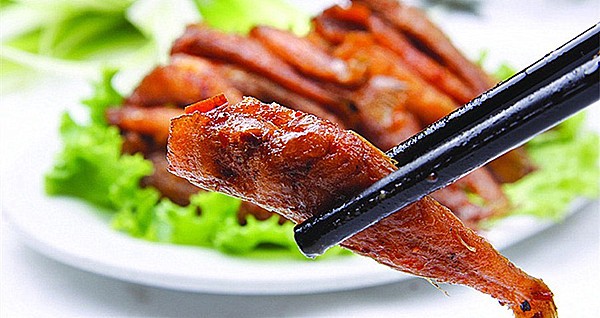Temperature requirements: cold like sex, cold resistance, resistance to freezing, the South can winter. Seedling leaves can withstand short-term temperature of -9°C. It germinates at 3°C, so it can be sown early. Dry seeds live in early spring, 15 to 20 days can emerge. Appropriate germination temperature of 20 ~ 23 °C, suitable for the growth temperature of the leaves and root 13 ~ 23 °C, the temperature exceeds 30 °C, plant respiration increased, poor growth. The spring sowing is too early, and the long-term low temperature is prone to premature anaesthesia. Roots with longevity plants of parsley. Very happy light, weak light or planted too dense, leaf and root growth is slow, easy to get leaf spot. Roots with parsley require strict soil. The plough layer is at least 20-25 cm, preferably in organic sandy neutral loam. Compacted clay soil can often lead to dislocations. Suitable for growing air humidity is 70%, suitable soil moisture is 60% to 80%. Excessive soil moisture, roots easily get sick. Suitable pH 6.5-7. Nitrogen fertilizer can not be too much, otherwise it is too long, nutrient consumption on the leaves is not conducive to the growth of the root, and the root easily bifurcated. The growth is too lush and prone to disease. Root parsley is a vegetable that requires a lot of fertilizer. Sowing: In the north, sowing is generally performed around the beginning of May. For the cultivated former crops, the melons, cabbages, cabbages, and legumes should be selected. The root vegetables should be avoided. It is best to be able to rotate for 3 years. If live in the early spring, the 70 cm ridge will be broadcast in double lines. Line spacing 20 to 25 cm, covering the thickness of 1 to 1.5 cm. Sowing rate 0.3 to 0.5 g/m2. 15 to 20 days after emergence. 4 to 5 leaves during the seedlings, each seedling retained a strong seedlings, spacing 15 to 20 cm. Field Management: Site preparation. Before planting, fertilize the soil. When the soil preparation is applied, 4 to 5 kg/m2 of decomposed organic fertilizer, phosphorus and potassium compound fertilizer 60 to 70 g/m2. Do you know. Ten to 20 centimeters high, sorghum should be selected in rainy areas. Cockroach width 80 to 100 cm, three or four rows of planting, spacing 20 to 25 cm, spacing 30 cm. When planting, pouring enough water, with the water to recover urea 8 ~ 10 grams / square meter. Always use water afterwards to keep the soil moist. During the period of rosette, 3 to 4 times of cooked feces (1:10) were used. In order to ensure the growth of roots, if necessary, outside the top dressing 1 to 2 times, can be used 0.1% to 0.2% potassium dihydrogen phosphate spray, and often cultivator weeding before mulching, at least 3 times loose soil. Thoroughly soil 5 cm away from the plants. The depth of loose soil is from shallow to deep, and the depth must not exceed 10 cm. To clear the old leaves in time. Pest control: The main pest is the leaf miner, which can be used for 2000 times of 2.5% deltamethrin EC, or 20% to 2500 times EC, or 40% dimethoate EC 1000 to 2000 times foliar spray. Leaf spot disease caused by Septoria spp. There were round or irregular brown spots, yellow spots, or white spots on the leaves. There was a circle of yellow-brown halo around the lesion. Spots are small, sometimes confined by veins. Autumn greenhouse cultivation, early spring hotbed cultivation and open field cultivation often occur. Soft rot causes root tissue to become soft and rot. Aboveground leaves turn yellow and wither. Seeds can be carried. Control methods are: 1 Select disease-free seed or seed disinfection. It can be soaked with hot water at 45-48°C and continuously stirred for 30 minutes, then immediately put into cold water to cool down. 2 In the initial stage of disease, use 65% dexamethasone WP, 500 times, or 70% chlorothalonil WP, 500 to 800 times foliar spray. White rot species tend to occur during storage. The surface of the root is covered with white hair and black sclerotia. It is generally infected before harvest and develops disease during storage. If the cellar is poorly ventilated, the humidity is very serious. Harvesting: In August, when the fleshy roots were larger than 200 grams, they were gradually harvested. It can always be harvested before freezing. General production of 667 square meters can reach 2000 kg or more.
We can supply you with many types of Canned Fish: Canned Tuna in oil, canned tuna in brine, canned mackerel in Tomato Sauce, Canned Sardine in vegetable oil and so on. There are different sizes for your choice 125 g, 155 g, 425 g. OEM specification and brand are available. The shelf time is 3 years. Pls keep the goods in dry and cool place.
*Related Products:canned sardine in oil,canned mackerel in tomato sauce.
Canned Fish Canned Sardine,Canned Tuna,Healthy Canned Fish,Canned Fish Hebei Tomato Industry Co., Ltd. , https://www.hebeitomato.com
Root cultivation with parsley
Root with parsley, also known as root parsley, Western root celery, is a variant of Umbelliferae parsley, is a biennial herb vegetable plant. Introduced from Russia in 1995.